31 Charming Rice Pudding Recipes for Sweet Comfort
Rice pudding, a beloved dessert with global roots, weaves comfort and nostalgia into every creamy spoonful.
Cultural traditions have transformed this humble dish into a canvas of culinary creativity.
Sweet memories often revolve around its soft, silky texture and warm, inviting aroma.
Home cooks and professional chefs alike appreciate its versatility and potential for delightful reinvention.
Global ingredients elevate this classic treat from simple to spectacular, challenging traditional preparation methods.
Innovative twists showcase how a basic recipe can become an extraordinary culinary experience.
Passionate food lovers understand that rice pudding represents more than just a dessert - it's a celebration of flavor and technique.
Here are 31 unique rice pudding recipes that will inspire your next sweet adventure:
Unique Rice Pudding Recipes Around the World
Rice pudding gets a new spin in every country, with spices, fruit, and creamy textures to explore. This beloved dessert is the ultimate comfort food for all ages.
Frn Sutlac
Frn sutlac is a classic Turkish dessert featuring a creamy rice pudding baked in an oven until golden brown with a caramelized surface.
Originating in Ottoman cuisine, this sweet treat combines simple ingredients like rice, milk, sugar, and rice flour for a smooth, light texture.
Chefs traditionally enhance the pudding with rose water, though modern versions frequently use vanilla for added flavor.
Broiled in a salamander to create a caramelized top, the dessert gains a rich, slightly crispy exterior.
Ground cinnamon or chopped hazelnuts often garnish the pudding before serving.
Its elegant simplicity makes frn sutlac a beloved dessert across Turkey.
Rich yet delicate, the pudding balances creamy smoothness with a hint of caramelized sweetness.
Phirni
Phirni is a creamy North Indian rice pudding that transforms simple ground rice into a luxurious dessert prized during festivals like Diwali.
Rich milk and ground rice create its signature smooth texture, while fragrant saffron, cardamom, and almonds infuse deep flavor complexity.
Small clay bowls called shikoras traditionally showcase this chilled sweet treat, adding cultural authenticity to its presentation.
Delicate silver paper or chandi warq often decorates the surface, elevating its visual appeal.
Nuts and rose petals provide a beautiful garnish that adds crunch and subtle floral notes.
Karwa Chauth celebrations frequently feature this elegant dessert as a special treat.
Khao Niao Mamuang
Khao niao mamuang represents Thailand's most beloved sweet treat combining sticky rice, coconut milk, and ripe mango slices into a creamy dessert sensation.
Glutinous rice steamed to perfection creates the dessert's signature texture and base.
Sweet coconut milk generously poured over warm rice adds rich, smooth layers of flavor.
Fresh mango segments contribute bright, tropical sweetness that balances the creamy rice.
Street vendors and restaurants across Thailand serve this simple yet irresistible dessert.
Summer months highlight the dish when mangoes reach peak ripeness.
Coconut milk's silky richness makes khao niao mamuang an unforgettable culinary experience.
Sholeh Zard
Sholeh zard is a golden-hued Iranian dessert steeped in centuries of culinary tradition, featuring fragrant saffron-infused rice pudding as its signature element.
Iranian families cherish this sweet delicacy for its rich cultural significance and complex flavor profile.
Saffron transforms ordinary rice into a luxurious treat by lending a warm, amber color and distinctive aroma.
Cooks carefully simmer rice with water, then blend in sugar and vibrant saffron to create its characteristic golden appearance.
Traditional garnishes like slivered almonds, pistachios, and ground cinnamon add texture and visual appeal to the dessert.
Cardamom provides subtle warmth and depth to the pudding's overall taste.
Kheer
Kheer is a beloved Indian rice pudding with ancient roots tracing back 2000 years to Lord Jagannath Temple in Orissa, celebrated for its rich, creamy texture and cultural significance.
Rice, wheat, or tapioca simmers slowly in milk and sugar, creating a silky dessert central to Indian ceremonies and festivals.
Cooks enhance kheer with aromatic cardamom, delicate saffron, and crunchy dried fruits and nuts.
Multiple regional variations exist across India, each offering a unique twist on this traditional sweet.
The dessert balances smooth milk-based consistency with subtle spice notes.
Its simplicity and elegance make it a cherished dessert nationwide.
Religious and family gatherings often feature this classic pudding as a symbol of celebration and warmth.
Risalamande
Risalamande is a luxurious Danish Christmas dessert featuring creamy rice pudding enhanced with whipped cream and chopped almonds, traditionally served with rich cherry sauce.
Denmark's festive culinary culture celebrates this sweet treat through a playful holiday game where one hidden whole almond brings special recognition to whoever discovers it during dessert.
Dating back to the late 19th century, this elegant pudding transforms simple rice porridge into a sophisticated holiday delicacy.
Family gatherings eagerly anticipate the moment someone finds the prized almond, which typically earns a small gift or special acknowledgment.
Cold and smooth, the dessert combines smooth rice, fluffy whipped cream, and crunchy almond pieces.
Sweet cherry sauce adds a bright contrast to the creamy white pudding.
Carefully prepared with love, risalamande symbolizes warmth and celebration during winter festivities.
Sakkarai Pongal
Sakkarai pongal emerges as a decadent South Indian sweet rice dessert originating from Tamil Nadu's harvest festival traditions.
Prepared with freshly harvested rice, the dish celebrates abundance through its signature boiling-over cooking method during Makar Sankranti celebrations.
Jaggery and ghee create a rich, caramelized base that transforms simple ingredients into a luxurious treat.
Dried coconut, sesame seeds, raisins, and cashew nuts add complex layers of texture and flavor.
Cooking occurs outdoors over an open fire, with clay pots deliberately facing eastward toward the rising sun.
Religious significance connects the dish to sun worship, symbolizing prosperity and agricultural bounty.
Milk and clarified butter contribute to its smooth, glossy consistency.
Arroz Zambito
Arroz zambito is a rich Peruvian dessert featuring creamy rice pudding infused with unrefined sugar and distinctive spices like aniseed and coconut.
Originating in 19th-century Peru, this sweet treat traditionally began as a water-based dish before evolving to include milk for enhanced smoothness.
Raisins add bursts of natural sweetness to the pudding's complex flavor profile.
Peruvians typically enjoy arroz zambito after consuming savory anticuchos, making it a popular post-meal indulgence.
Toasted pecans provide a delightful crunch when sprinkled on top of the dessert.
Served at room temperature, arroz zambito represents a classic example of Peru's innovative dessert culture.
Its unique blend of ingredients reflects generations of culinary creativity.
Zerde
Zerde is a golden-hued Turkish dessert starring saffron-infused rice pudding that celebrates special occasions with its vibrant yellow color and rich cultural significance.
Sweet rice gets boiled and transformed with sugar, turmeric, and precious saffron threads that create its signature sunshine-like appearance.
Traditionally served at weddings, birthdays, and Ramadan celebrations, this dessert connects generations through its unique recipe.
Nuts like pine nuts and pistachios generously garnish the smooth surface, adding delightful crunch and nutty flavor.
Restaurants and dessert shops across Turkiye regularly feature zerde as a beloved traditional treat.
Saffron gives the pudding its distinctive yellow tone and luxurious aroma.
Arroz Con Leche
Arroz con leche is a creamy Spanish rice pudding that blends rich cultural heritage with simple, comforting ingredients.
Moorish influences shaped this dessert's origins during Spain's historical culinary transformations.
Spanish and Latin American families have cherished this sweet treat for generations, preparing it with cooked rice, milk, sugar, and aromatic cinnamon sticks.
Traditional recipes often include lemon or orange peel for added complexity and depth of flavor.
Variations exist across different regions, each adding unique touches to the classic recipe.
Serving temperatures range from warm to chilled, with a sprinkle of ground cinnamon as a final garnish.
This dessert remains a beloved comfort food that connects generations through its sweet, nostalgic taste.
Danish Rice Pudding (Risengrd)
Danish rice pudding (risengrd) is a cherished Christmas dessert steeped in Scandinavian folklore, traditionally prepared with short-grained rice, milk, water, and a touch of salt.
Danish families craft this creamy pudding by vigorously stirring rice until it transforms into a smooth, thick texture that warms winter evenings.
Mythological nisse, a mischievous house guardian resembling a short bearded elf, considers risengrd his favorite seasonal treat.
Sweet and comforting, risengrd connects modern families to ancient Nordic culinary traditions.
Danes serve this dessert as a special Christmas delicacy, honoring both cultural heritage and seasonal celebrations.
Legends suggest leaving a bowl of risengrd for nisse to ensure good fortune and household protection.
Rich with history and flavor, this dessert embodies Danish winter hospitality and mythical charm.
Arroz Doce
Arroz doce is a creamy Portuguese dessert celebrated for its rich, silky texture and sweet comfort.
Portuguese sailors likely introduced this rice pudding during maritime explorations, spreading its popularity across continents.
Simple ingredients like rice, milk, sugar, eggs, and cinnamon create its classic flavor profile.
Mediterranean and Brazilian variations often include condensed milk or unique spice blends.
Some regions garnish the pudding with additional cinnamon or citrus zest for extra depth.
Smooth and warming, arroz doce remains a beloved dessert that connects people through shared sweet memories.
Champorado
Champorado is a decadent Filipino chocolate rice porridge beloved for its rich, sweet combination of glutinous rice, cocoa powder, and sugar.
Spanish colonial influences brought this warm breakfast dish from Mexico's champurrado to Philippine kitchens.
Filipino families traditionally serve champorado with crispy dried fish called tuyo, creating a unique sweet-and-salty flavor profile.
Rice serves as the primary ingredient, slowly simmered until creamy and infused with chocolate notes.
Sugar balances the cocoa's bitterness, making each spoonful smooth and comforting.
Champorado remains a nostalgic comfort food that connects Filipinos to their cultural culinary heritage.
Sutlijas
Sutlijas is a creamy Bosnian rice pudding originating from Ottoman culinary traditions, blending simple rice, milk, and sugar into a smooth, comforting dessert.
Bosnians carefully cook these ingredients in a single pot, creating a sweet and silky texture that reflects cultural influences from centuries of Ottoman presence.
Traditional preparation involves slowly simmering rice until it softens and releases its starch, transforming the mixture into a rich, white pudding.
Families often serve sutlijas chilled or warm, depending on personal preference and seasonal temperatures.
Sugar levels can vary, allowing cooks to adjust sweetness to individual tastes.
Historical records trace sutlijas back to 14th-century Ottoman cuisine, highlighting its deep cultural roots.
Bosnia's version closely resembles Turkish sutlac, demonstrating shared culinary heritage across southeastern European regions.
Teurgoule
Teurgoule is a slow-baked Normandy rice pudding renowned for its unique caramelized crust and rich, creamy texture.
French culinary traditions highlight this dessert's signature method of low-temperature baking in traditional earthenware bowls.
Full-fat Normandy milk forms the pudding's luxurious base, combined with simple ingredients like rice, sugar, salt, and cinnamon.
Nutmeg occasionally adds depth to its flavor profile.
Cooking happens gradually in the oven, allowing ingredients to meld and develop complex caramelized notes.
Surface browning indicates the pudding's readiness, with excess liquid completely evaporated.
Regional pride surrounds this classic dessert, which connects generations through its time-honored preparation.
Local families have passed down this recipe for centuries, celebrating Normandy's dairy and agricultural heritage.
Pongal
Pongal are traditional south Indian rice delicacies deeply rooted in cultural celebrations and spiritual significance.
Rice pudding transforms into a sacred dish during Thai Pongal festival, marking harvest season's end with profound Tamil traditions.
Families gather around clay pots cooking rice with milk, believing liquid spillage signals upcoming prosperity and good fortune.
Ceremonial preparation involves each family member adding rice while praying to Sun god.
Sweet and savory variations emerge through careful ingredient selection, creating unique flavor profiles.
Sri Lankan Tamil communities originally developed this meaningful dish, connecting generations through shared culinary practices.
Banana leaves serve as traditional serving platforms, enhancing sensory dining experiences.
Remaining portions often get shared among friends and relatives, spreading communal warmth and spiritual blessings.
Rizogalo
Rizogalo is a smooth, creamy Greek rice pudding beloved for its luxurious texture and simple ingredients that blend milk, rice, and sugar into a silky comfort dessert.
Greeks traditionally serve this sweet treat for breakfast, afternoon snacks, or as a light after-dinner indulgence.
Vanilla and cinnamon often enhance its warm, inviting flavor profile.
Sugar provides additional sweetness, creating a rich and satisfying experience.
Mediterranean culinary traditions inspire this classic dessert's preparation method.
Milk quality significantly impacts the pudding's final taste and consistency.
Families have passed down rizogalo recipes through generations, maintaining its cultural significance.
Kamby Arro
Kamby arro are creamy Paraguayan rice puddings bursting with sweet milk and rice traditions from indigenous Guarani culture.
Sweet rice kernels simmer slowly in fresh milk until they soften and absorb rich liquid flavors.
Sugar and delicate lemon zest enhance the dessert's natural smoothness and complexity.
Paraguayan families often prepare this classic treat during celebrations and weekend gatherings.
Vanilla sometimes adds extra depth to the traditional mixture.
Regional cooks may include cinnamon for subtle warmth.
Smooth textures and gentle sweetness make kamby arro a beloved South American comfort dessert.
Riz Au Lait
Riz au lait is a creamy French rice pudding steeped in culinary history, originating from medieval European kitchens and traditionally prepared by slowly simmering rice with milk, sugar, and vanilla until achieving a luxurious, smooth consistency.
Medieval aristocrats once savored this dessert seasoned with rare saffron and sugar, symbolizing wealth and sophistication during centuries when such ingredients were prohibitively expensive.
French families gradually transformed the dish from an elite delicacy to a beloved comfort food, typically reserved for special occasions and holiday celebrations.
Recipes dating back to the 14th century reveal fascinating variations, including early versions made with broth or almond milk instead of traditional cow's milk.
Regional French traditions often incorporate unique touches like cinnamon, orange zest, or caramel garnishes to enhance the pudding's classic flavor profile.
Simple ingredients and slow cooking techniques remain crucial to creating its signature creamy texture and rich taste.
Meghli
Meghli are Lebanese rice puddings celebrating newborn arrivals with deep cultural symbolism and nutritional benefits for new mothers.
Rice flour, caraway, water, and sugar form this vegan dessert's simple base, slowly cooked into a rich brown pudding representing fertile soil's color.
Traditional preparations include generous nut toppings symbolizing growing seeds, while caraway aids maternal lactation and digestive health.
Families prepare this special dish to honor birth milestones and support postpartum recovery.
Gluten-free and dairy-free ingredients make meghli accessible to many dietary needs.
Spices like cinnamon and anise add warmth and complexity to the pudding's flavor profile.
Garnished with pistachios, almonds, and coconut, each serving becomes a textural and nutritional celebration.
Budino Di Riso
Budino di riso is a classic Italian dessert that transforms humble rice into a silky, comforting sweet treat cherished across generations.
Grandmothers throughout Italy traditionally prepare this pudding on special Sundays and holidays as a family favorite.
Rice simmered in milk creates a luxurious base for this creamy dessert, which combines simple ingredients like eggs, butter, and warm spices.
Vanilla, lemon zest, or cinnamon typically enhance its delicate flavor profile.
Italian families pass down unique recipe variations, making each budino di riso slightly different.
Regional ingredients and personal touches contribute to its distinctive character.
This nostalgic dessert represents a beautiful connection between Italian culinary traditions and home cooking.
Ryzovy Nakyp
Ryzovy nakyp is a hearty Slovak rice pudding that transforms simple ingredients into a creamy main course with layered textures and flavors.
Rice simmered in milk forms the base of this comforting dish, blended with egg yolks, sugar, and vanilla for richness.
Beaten egg whites create a fluffy meringue-like topping that gives the pudding its signature light and airy texture.
Cooks often fold fresh cherries or peaches into the mixture, adding bursts of fruity sweetness between rice layers.
Butter contributes a smooth, silky consistency that balances the dessert's overall profile.
Slovak families traditionally serve this versatile dish as a satisfying second course or complete meal.
Each serving offers a delightful combination of creamy rice, sweet fruit, and cloud-like egg white topping.
Shir Birinj
Shir birinj are creamy Iranian rice puddings crafted from whole milk and short-grain rice, delivering a smooth sweet comfort food popular across Afghanistan and Iran.
Persian families traditionally prepare this dessert by slowly simmering rice in milk until achieving a thick, luxurious consistency.
Sugar enhances the pudding's natural sweetness, creating a gentle dessert that feels both nostalgic and comforting.
Persian restaurants and home kitchens often serve this pudding chilled or warm as a simple yet satisfying conclusion to meals.
Salt and butter can sometimes be added for deeper richness.
Gatnabour
Gatnabour is a beloved Armenian rice pudding celebrated for its creamy texture and delicate sweetness that transforms simple ingredients into a comforting dessert.
Armenian families have cherished this traditional dish for generations, crafting it with basic pantry staples like rice, milk, salt, and sugar.
Rose water and cinnamon powder often enhance its subtle flavor profile, adding aromatic depth to the pudding.
Preparing gatnabour involves carefully cooking rice in boiling water until nearly tender, then slowly simmering it in warm milk.
Constant stirring ensures a smooth, luscious consistency that defines this classic treat.
Gatnabour offers versatile serving options, tasting equally delicious when served warm, at room temperature, or chilled.
Its simplicity and comforting nature make it a cherished dessert across Armenian households.
Doodhpak
Doodhpak is a creamy rice pudding originating from Gujarat and Parsi culinary traditions that transforms simple ingredients into a luxurious dessert.
Sweet milk slowly simmers with rice, creating a rich, smooth texture that melts in you mouth.
Sugar enhances the pudding's natural sweetness, while aromatic cardamom, nutmeg, and saffron infuse complex flavors.
Almonds, pistachios, and charoli nuts add delightful crunch and depth to each spoonful.
Gujarati families often prepare this comforting dessert during festivals and special gatherings.
Served warm or chilled, doodhpak offers a satisfying balance of creamy and nutty elements.
Its simple preparation belies the sophisticated taste profile that makes it a beloved regional treat.
Ven Pongal
Ven pongal represents a comforting South Indian rice dish rooted in Tamil cuisine, featuring rice and moong dal blended into a creamy, smooth consistency that symbolizes prosperity through its traditional boiling-over preparation method.
Karnataka and Tamil Nadu regions celebrate this hearty breakfast staple with rich ghee-based tempering that transforms simple ingredients into a flavor-packed meal.
Black pepper, cumin, and curry leaves provide a warm, aromatic profile that elevates the mild base of rice and lentils.
Ginger adds subtle spiciness while cashews contribute a delicate crunch to the dish.
Religious ceremonies and festive occasions frequently feature this nutritious dish as a symbol of community and shared meals.
Traditionally prepared during harvest festivals, ven pongal connects generations through its simple yet meaningful culinary technique.
Gotlandsk Saffranspannkaka
Gotlandsk saffranspannkaka reveals Sweden's sweet regional heritage through a golden-hued baked dessert bursting with saffron's distinctive flavor.
Swedish island cuisine celebrates this unique pudding-like treat originating from Gotland featuring delicate rice, eggs, and almonds.
Saffron transforms ordinary ingredients into a luxurious golden-yellow creation with complex textures and rich undertones.
Bakers carefully blend rice pudding with sugar, cream, and beaten eggs before baking the mixture to perfection.
Traditional serving accompaniments include fresh dewberry jam and fluffy whipped cream.
Restaurant menus across Sweden highlight this distinctive island dessert as a cultural specialty.
Saffranspannkaka represents a cherished culinary tradition connecting modern diners with historic Swedish gastronomy.
Nom Lote
Nom lote are vibrant Cambodian green rice pudding cups crafted from rice flour, pandan leaf extract, and coconut milk, delivering a uniquely fragrant dessert with striking emerald coloration.
Palm sugar and water create the pudding's sweet liquid base, which transforms simple ingredients into a complex treat.
Rice flour gets cooked with white lime until reaching a thick consistency, then carefully strained into serving bowls.
Heated coconut milk adds richness to the dessert's texture and flavor profile.
Pandan leaf extract provides the signature green hue and aromatic essence that distinguishes nom lote from other regional sweets.
Cambodian home kitchens frequently prepare this refreshing dessert during warm seasons.
Traditional preparation requires careful cooking techniques passed through generations.
Salted water helps balance the pudding's overall sweetness, creating a nuanced taste experience.
Yayma
Yayma is a saffron-infused rice pudding originating from Peru, known for its distinctive golden hue and aromatic flavor profile.
Peruvian cooks prepare this creamy dessert by slowly cooking rice with water and milk until it reaches a smooth, silky consistency.
Saffron transforms the pudding into a vibrant yellow dish with an exotic fragrance that instantly captivates diners.
Butter, cinnamon, and honey are traditional toppings that enhance the pudding's rich taste and texture.
Sugar can be added during cooking for those preferring a sweeter version of this classic dessert.
Champulado
Champulado stands out as a rich Chamorro dessert pudding blending rice, milk, sugar, and cocoa powder into a creamy sweet treat.
Native to Guam, this comforting dish originates from Mexican champurrado with distinctive island variations.
Rice gets boiled until soft and tender, then slowly mixed with cocoa for a smooth, velvety consistency.
Cold or warm servings offer flexibility for different preferences.
Sweet chocolate notes complement the rice's mild flavor perfectly.
Simple ingredients make this dish accessible to anyone wanting a quick sugar fix.
Cultural heritage shines through each spoonful of this beloved island dessert.
Sombi
Sombi is a beloved Senegalese rice pudding that melts hearts with its creamy coconut richness and simple preparation.
Sweet grains simmer slowly in coconut milk, creating a smooth, comforting dessert cherished across West African homes.
Sugar and salt balance the pudding's gentle flavors, transforming basic ingredients into a luxurious treat.
Warm servings offer maximum satisfaction, though chilled versions provide refreshing relief during hot days.
Rice absorbs coconut milk, developing a silky texture that defines this traditional dessert.
Minimal ingredients make sombi accessible to home cooks of all skill levels.
Cultural significance runs deep in this humble yet beloved sweet.
Senegalese families often share sombi as a nostalgic reminder of home and comfort.
What Is the Difference Between Sweet and Savory Rice Puddings?
The primary difference between sweet and savory rice puddings lies in their flavor profiles, ingredients, and typical serving contexts:
Are Short-Grain or Long-Grain Rices Better for Rice Pudding?
Short-grain rice is generally preferred for rice pudding because its higher starch content creates a creamier, stickier texture that is ideal for pudding. Varieties like Arborio or sushi rice work well.
Long-grain rice, which is less starchy and more separate when cooked, tends to produce a drier, fluffier texture and is less commonly used for traditional rice puddings.

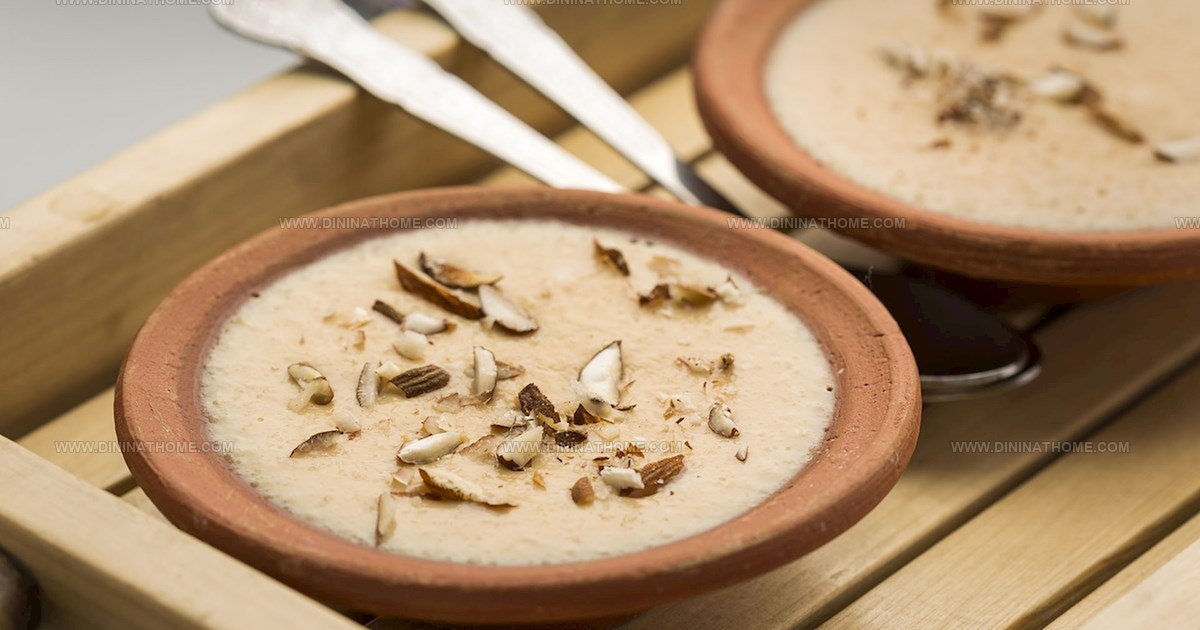

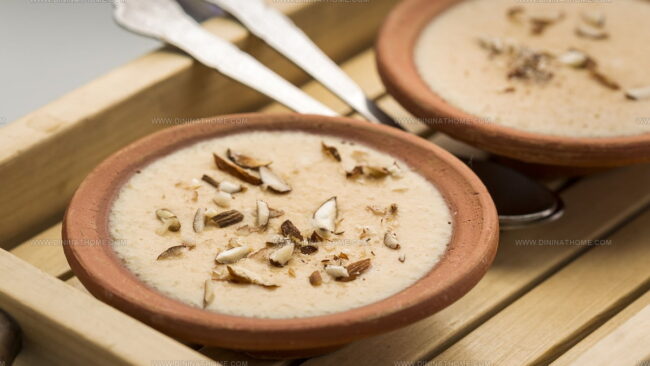
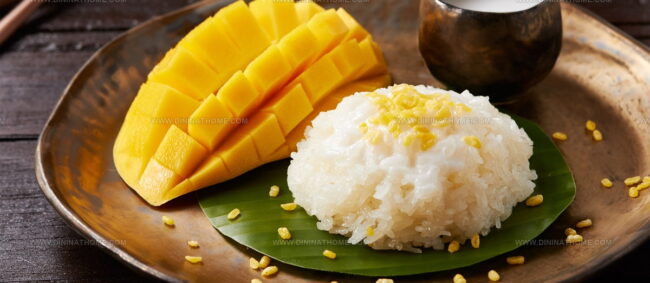

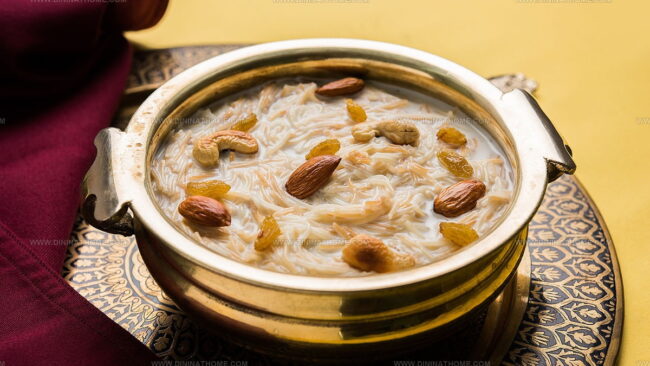

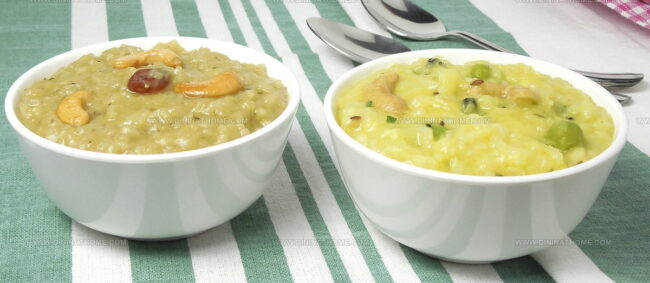

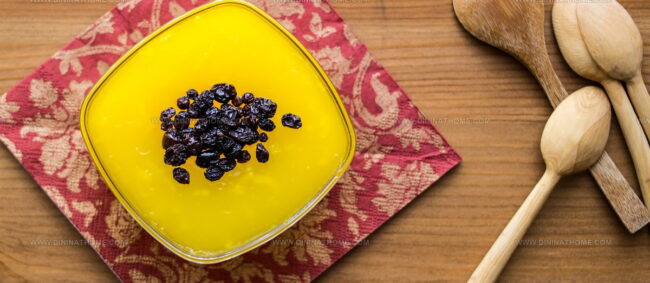


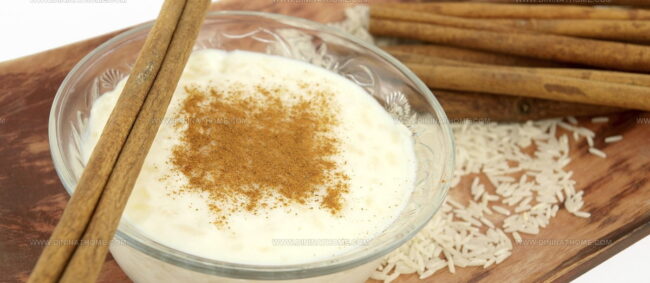



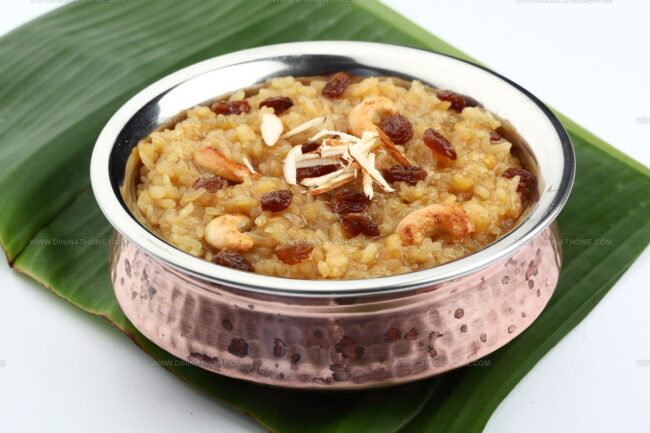

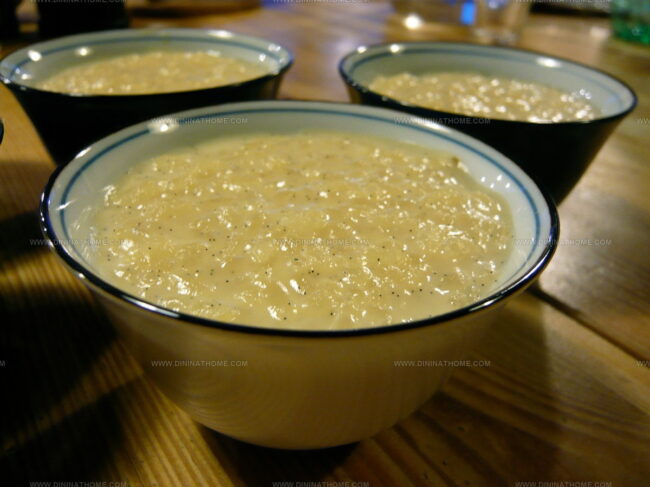
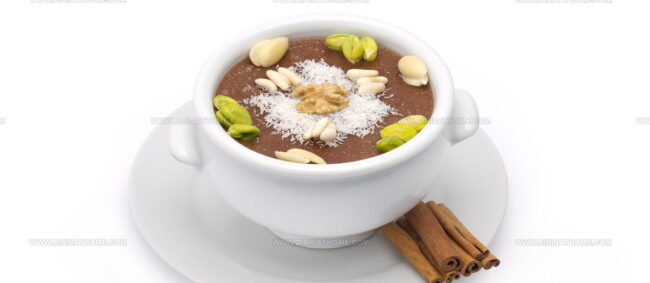

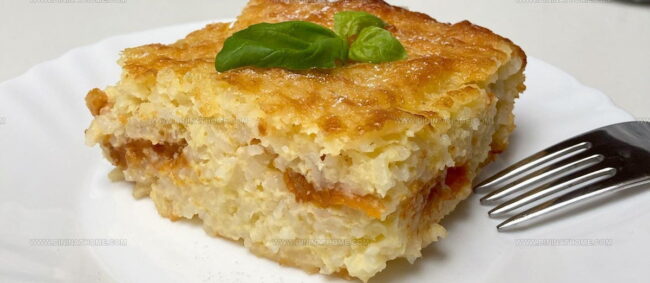

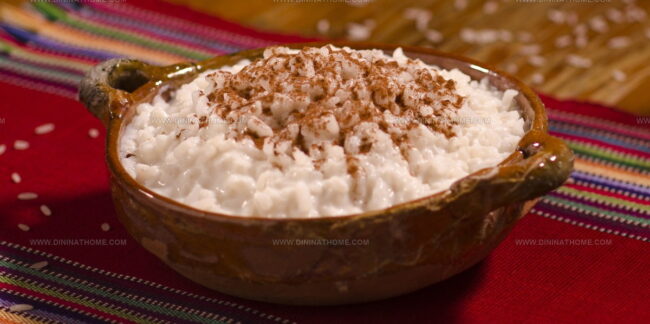
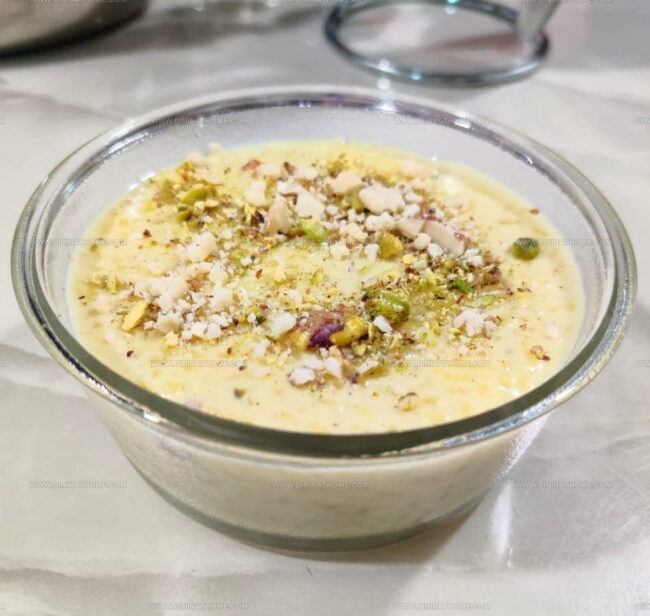
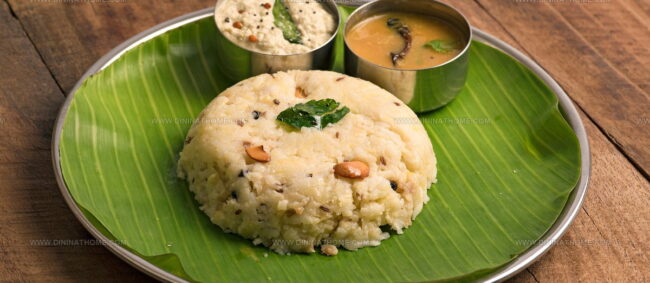

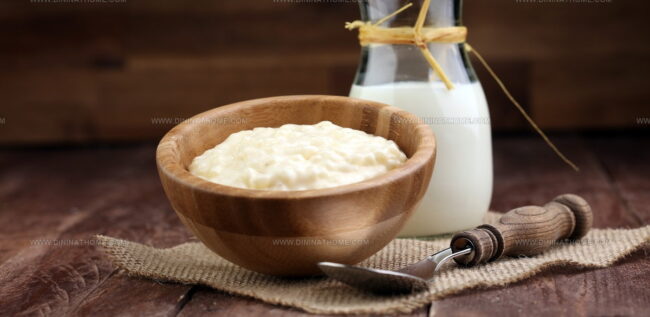
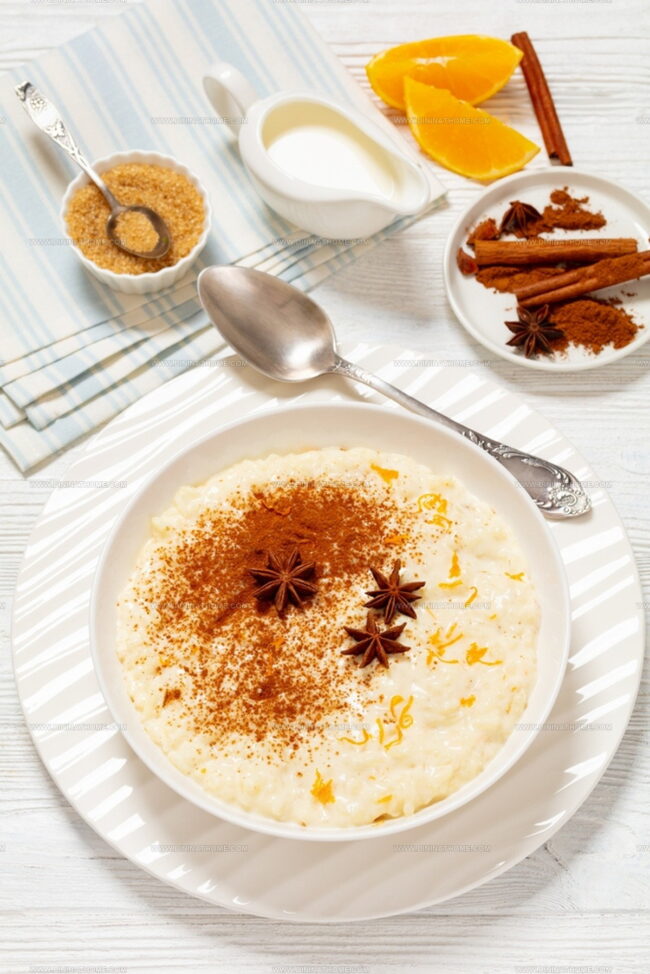
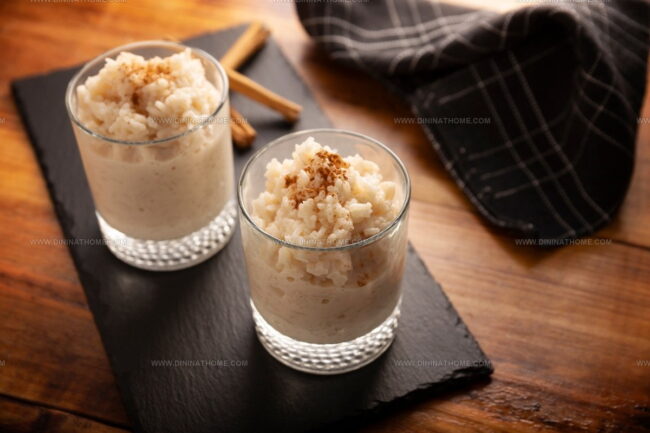
Emily Harper
Nutrition Consultant & Recipe Analyst
Expertise
Healthy Recipe Modification, Nutritional Analysis & Meal Planning, Global Cuisine & Dietary Adaptations
Education
School: French Pastry School, Chicago, IL
Program: L’Art de la Pâtisserie
Focus: Intensive training in traditional French pastry techniques, baking theory, and confectionery arts.
Emily’s journey started in a pastry kitchen but took a detour into the world of health and flavor science.
Graduating from the French Pastry School and studying nutrition opened her eyes to a new mission: making healthy food taste like something you’d actually crave.
At Dining At Home, Emily’s the go-to for smart, feel-good recipes that don’t trade flavor for nutrition.
She’s all about adding a fresh spin on old favorites and finding small ways to make everyday meals a little brighter.
Outside of the kitchen, Emily is most at home walking forest trails, testing plant-based recipes, or sharing a picnic under a wide-open sky.